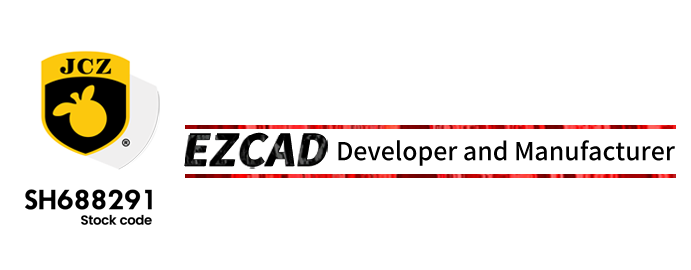
Fiber vs CO2 vs UV: Which Laser Marker Should I Choose?
Laser marking machines play a crucial role in marking surfaces of products made from different materials, especially for various processes such as coloring stainless steel and darkening aluminum. Commonly seen in the market are CO2 laser marking machines, fiber laser marking machines, and UV laser marking machines. These three types of laser marking machines differ significantly in terms of laser source, wavelength, and application areas. Each is suitable for marking and meeting specific processing requirements for different materials. Let's delve into the specific differences between CO2, fiber, and UV laser marking machines.
Differences between Fiber, CO2, and UV Laser Marking Machines:
1. Laser Source:
- Fiber laser marking machines use fiber laser sources.
- CO2 laser marking machines use CO2 gas laser sources.
- UV laser marking machines use short-wavelength UV laser sources. UV lasers, also known as blue lasers, possess low heat generation capabilities, making them suitable for cold light engraving, unlike fiber and CO2 laser marking machines that heat the material's surface.
2. Laser Wavelength:
3. Application Areas:
- CO2 laser marking machines are suitable for engraving most non-metal materials and some metal products.
- Fiber laser marking machines are suitable for engraving most metal materials and some non-metal materials.
- UV laser marking machines can provide clear markings on materials sensitive to heat, such as certain plastics.
CO2 Laser Marking Machine Performance Features:
1. High precision, fast marking, and easily controlled engraving depth.
2. Powerful laser power suitable for engraving and cutting various non-metal products.
3. No consumables, low processing costs, with a laser lifespan of 20,000 to 30,000 hours.
4. Clear, wear-resistant markings with fast engraving and cutting efficiency, environmentally friendly and energy-efficient.
5. Utilizes a 10.64nm laser beam through beam expansion, focusing, and controlled mirror deflection.
6. Acts on the work surface along a predetermined trajectory, causing material vaporization to achieve the desired marking effect.
7. Good beam quality, stable system performance, low maintenance costs, suitable for high-volume, multi-variety, high-speed, high-precision continuous production in industrial processing.
8. Advanced optical path optimization design, unique graphic path optimization technology, combined with the laser's unique super-pulse function, resulting in faster cutting speeds.
Applications and Suitable Materials for CO2 Laser Marking Machine:
Suitable for paper, leather, fabric, organic glass, epoxy resin, woolen products, plastic, ceramics, crystal, jade, and wooden products. Widely used in various consumer goods, food packaging, beverage packaging, medical packaging, architectural ceramics, clothing accessories, leather, textile cutting, craft gifts, rubber products, shell brands, denim, furniture, and other industries.
Performance Features of Fiber Laser Marking Machine:
1. Powerful marking software compatibility with applications such as Coreldraw, AutoCAD, Photoshop; supports PLT, PCX, DXF, BMP, SHX, TTF fonts; supports automatic coding, printing serial numbers, batch numbers, dates, barcodes, QR codes, and automatic skipping.
2. Utilizes an integrated structure with an automated focus adjustment system for user-friendly operations.
3. Uses imported isolators to protect the fiber laser window, enhancing stability and laser lifespan.
4. Requires minimal maintenance, with a long lifespan and suitability for working in harsh environments.
5. Fast processing speed, two to three times faster than traditional marking machines.
6. High electro-optical conversion efficiency, overall power consumption below 500W, 1/10 of lamp-pumped solid-state laser marking machines, significantly saving energy costs.
7. Better beam quality than traditional solid-state laser marking machines, suitable for fine and tight marking.
Applicable to metals and various non-metal materials, including high-hardness alloys, oxides, electroplating, coatings, ABS, epoxy resin, ink, engineering plastics, etc. Widely used in industries such as plastic transparent keys, IC chips, digital product components, tight machinery, jewelry, sanitary ware, measuring tools, knives, watches and glasses, electrical appliances, electronic components, hardware jewelry, hardware tools, mobile communication components, auto and motorcycle accessories, plastic products, medical equipment, building materials, pipes, etc.
UV Laser Marking Machine:
Characteristics of UV Laser Marking Machine:
The UV laser marking machine, also known as a UV laser, is one of the more advanced laser marking devices in the country. This equipment is developed using a 355nm UV laser, employing third-order cavity frequency doubling technology. Compared to infrared lasers, 355nm UV lasers have a very fine focused spot. The marking effect is achieved by directly breaking the molecular chain of the substance with a short-wavelength laser, significantly reducing material mechanical deformation. Although it involves heating, it is considered cold light engraving.
Applications and Suitable Materials for UV Laser Marking Machine:
UV laser marking machines are particularly suitable for marking, micro-hole drilling in food and pharmaceutical packaging materials, glass, ceramic materials high-speed division, and complex graphic cutting of silicon wafers.
Post time: Dec-11-2023






